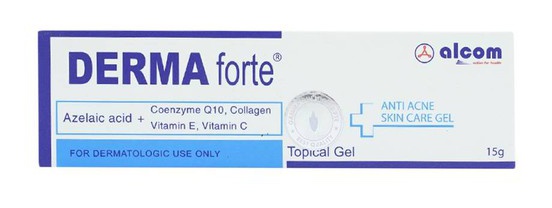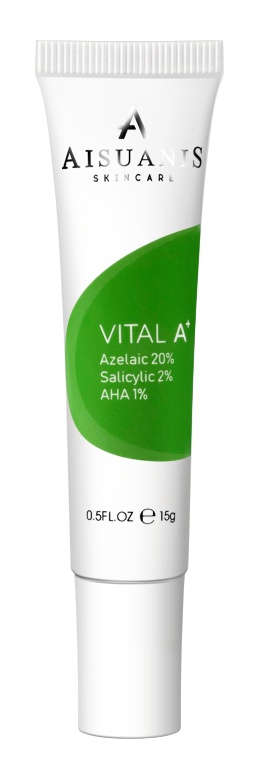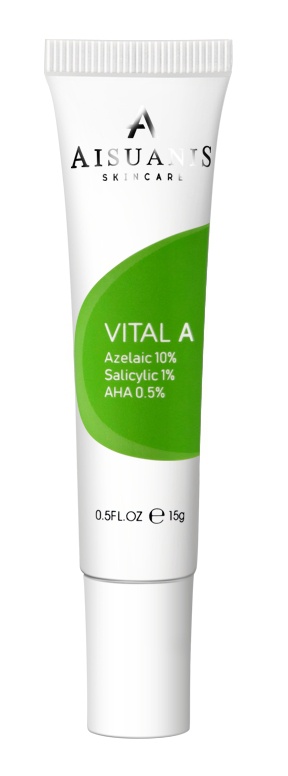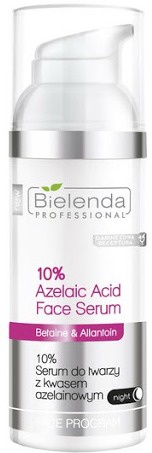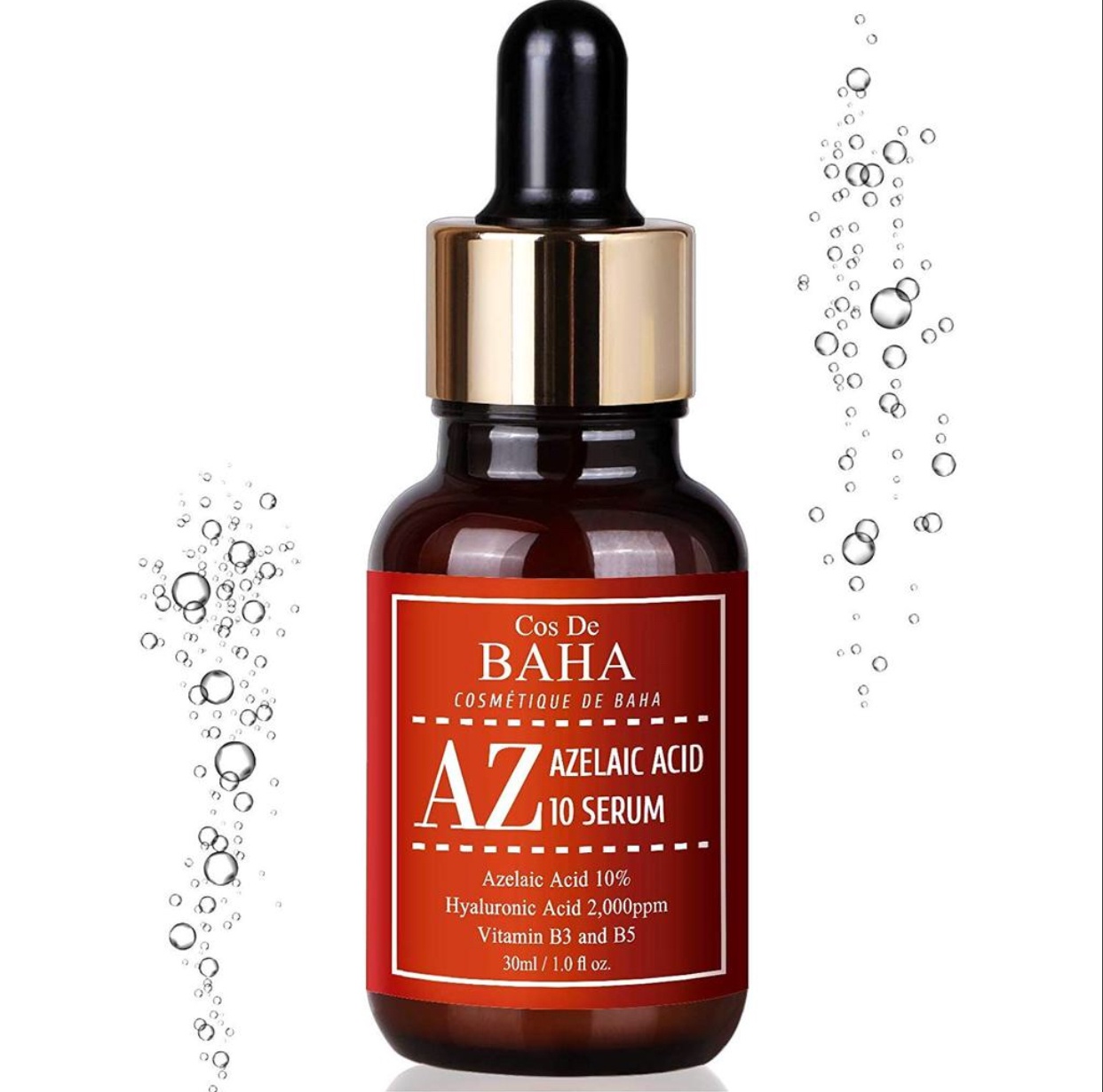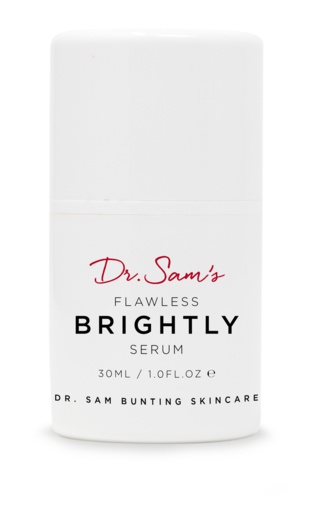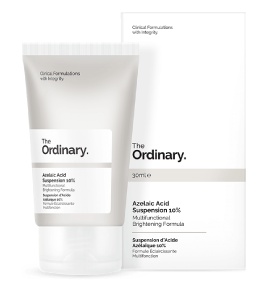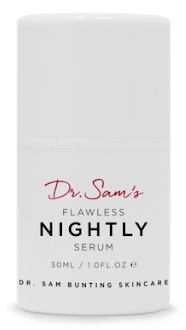Quick Facts
- Superstar ingredient with antibacterial, skin cell regulating, anti-inflammatory and skin-lightening magic properties
- It is especially useful for acne-prone or rosacea-prone skin types (in concentration 10% and up)
- It is a prescription drug in the US but can be freely purchased in the EU in an up to 10% concentration
Geeky Details
Azelaic acid is a superstar acid with some serious magic properties. Before we list them out here's just a short intro.
Azelaic acid is a so-called carboxylic acid. It’s not an AHA or BHA but a distant relative to them (all being carboxylic acids). It can be found naturally in wheat, rye, and barley.
Magic property no.1: Antibacterial effect → Anti-Acne
A very cool property of azelaic acid is that it has a great antibacterial effect. It works against multiple bacteria including the evil, acne-causing Propionibacterium acnes (P. acnes). Very few ingredient are proven to work against P. acnes, so this alone makes azelaic acid an awesome choice for acne-prone skin.
For acne treatment, 20% is the standard prescription strength choice. Comparing 20% azelaic acid to other acne treatments like 0.05% retinoic acid cream, 5% benzoyl peroxide cream or 2% erythromycin ointment azelaic acid had nothing to be ashamed for as it showed similar effectiveness.
There is also a study that showed that 5% azelaic acid is also somewhat effective (about 32% improvement) and it can be made much more effective by combining it with 2% clindamycin (about 64% improvement.)
Magic property no. 2: Regulate the production of skin cells → Anti-Acne
One of our favourite beauty blogs, xoVain cites dermatologist, Dr. David Lortscher, who gives a great explanation: “Azelaic acid also works on the cells that line hair follicles by changing the way they mature and proliferate, which decreases follicular ‘plugging’ and helps prevent blackheads, whiteheads, and inflamed acne lesions.” So basically it helps with healthy skin cell production in the pores that is often problematic in acne and blackhead prone skin, which is nice!
Magic property no. 3: Anti-inflammatory effect → Anti-rosacea, anti-acne
The third magic property of azelaic acid is that it is proven to have an e anti-inflammatory effect. This is cool not only for treating acne, but also for treating rosacea. 15% is the standard prescription strength dose for rosacea treatment.
Magic property no. 4: Skin lightening effect → Anti-PIH, anti-melasma
Last but not least azelaic acid also shows skin lightening properties. It seems to be especially effective for post-inflammatory hyperpigmentation (that often comes with acne) and melasma. Studies have compared 20% azelaic acid to 2% and 4% Hydroquinone and here again, it has nothing to be ashamed of, azelaic acid showed similar skin lightening properties. (Though interestingly azelaic acid did not seem to be effective for lightening age spots that are called solar lentigines.)
So the bottom line is that azelaic acid can be a game changer (or rather skin changer) especially for acne-prone or rosacea skin types. It’s antibacterial, can regulate problematic skin cell production in pores, it’s anti-inflammatory and even helps with PIH and melasma. It really can do a lot.
Show me some proof
- Journal of Cosmetic Dermatology, Volume 3 (2) – Apr 1, 2004, Alpha‐hydroxyacids and carboxylic acids
- Cutaneous and ocular toxicology., 2011 Dec;30(4):286-91., Combination of azelaic acid 5% and clindamycin 2% for the treatment of acne vulgaris.
- Journal of Drugs in Dermatology, September 2015 | Volume 14 | Issue 9, Azelaic Acid: Evidence-based Update on Mechanism of Action and Clinical Application







